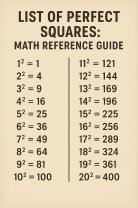How many CEUS is a college course?
The equivalence between Continuing Education Units (CEUs) and college credit hours is not standardized and can vary depending on the institution or accrediting body. CEUs and college credit hours serve different purposes and are often used in distinct educational contexts.
In a typical college or university setting in the United States, one college credit hour is equivalent to approximately 15 to 16 contact hours of class time over the course of a semester. This includes both lecture and, in some cases, laboratory or practical components.
On the other hand, CEUs are a measure of non-degree learning experiences and are commonly used for professional development and continuing education. One CEU is generally equivalent to 10 contact hours of participation in an organized continuing education experience, excluding breaks.
While there is no universally agreed-upon conversion factor between college credit hours and CEUs, a common approximation is that one college credit hour is roughly equal to 1.5 to 1.6 CEUs. This can vary, and it's essential to check with the specific educational institution or accrediting body for their guidelines.
It's important to note that the conversion factor may be influenced by factors such as the depth and intensity of the coursework, the level of academic rigor, and the nature of the learning experience. If you need to convert CEUs to college credit hours or vice versa for a specific purpose, such as transferring credits or meeting professional development requirements, it's recommended to consult with the relevant educational institutions or accrediting bodies involved to obtain accurate and official information.
How are college courses measured in CEUs (Continuing Education Units)?
There's no direct conversion of college courses to Continuing Education Units (CEUs) because they serve different purposes. College courses are primarily focused on academic learning and credentialing within a specific field, while CEUs are meant for professional development and updating skills in existing professions.
However, some connections can be made:
1. Time-based Conversion:
- One CEU generally equals 10 contact hours of active learning.
- A typical college semester course might have 3-4 credit hours, which can be loosely estimated as 45-50 contact hours of instruction and independent work.
- This could translate to 1.0-1.2 CEUs per college course, assuming active engagement and workload.
2. Learning Outcome-based Mapping:
- Some institutions may award CEUs for specific college courses based on their content and alignment with professional development needs in certain fields.
- This mapping would require careful analysis of the course curriculum, learning objectives, and assessment methods to ensure they meet CEU standards and address relevant professional skills and knowledge.
3. Third-party Accreditation:
- Some organizations offer accreditation programs for college courses to award CEUs.
- This typically involves a rigorous review process to ensure the course meets CEU standards for content, instruction, and assessment.
- Accredited courses can then be directly translated into CEUs for participants who successfully complete them.
Important points to remember:
- Converting college courses to CEUs is not a standardized practice and may vary depending on the institution, field, and specific course.
- Always check with the relevant professional licensing body or organization to determine if a specific college course qualifies for CEUs towards your professional development requirements.
- Some institutions may offer alternative pathways for earning CEUs, such as attending workshops, conferences, or online learning modules.
I hope this clarifies the relationship between college courses and CEUs!









